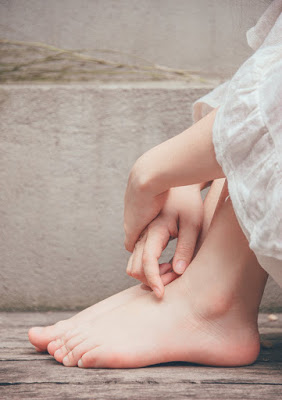Key Things You Should Know About Plantar Warts
Plantar warts are wa rts that develop on the soles of a person’s feet. They are not only quite annoying initially but may even cause pain when they grow big. However, most of the plantar warts are quite harmless and go away on their own.
rts that develop on the soles of a person’s feet. They are not only quite annoying initially but may even cause pain when they grow big. However, most of the plantar warts are quite harmless and go away on their own.
The Clause: Plantar warts are caused by HPV or Human Papilloma Virus which is also the most common infection transmitted through sex. However, it’s important to note that plantar warts are different from genital warts. The HPV has over 100 strains and the type primarily responsible for plantar warts is HPV-1. When HPV infects skin cells, they grow quicker compared to cells in the surrounding areas thus triggering a wart. HPV is a contagious virus, which means it can spread easily among people, especially in wet, warm environments.
Key Symptoms: Plantar warts may appear similar to corns but are distinguished by their structure and location. They tend to form on weight-bearing parts of the sole or heel while corns are mostly found on the smaller toes’ top surface.
Here are the common symptoms of plantar warts:
Thick, hard skin over a particular area on the skin. It sometimes feels like a callus.
A small, grainy, rough growth on the bottom of the feet, generally at the heel or at the base of the forefoot and toes.
Black pinpoints that are commonly known as wart seeds but are clotted, small blood vessels in reality.
Pain in the area where the plantar wart is formed when walking or standing.
Larger plantar warts may split sometimes, exposing sensitive tissue and causing bleeding and pain.
Who Are at Risk?
While anyone can develop these warts, they are most commonly found in people who regularly go barefoot in communal areas. For instance, athletes like gymnasts or dancers have been observed to bear higher rates of warts. Additionally, those who perform and practice barefoot on surfaces that are also used by others barefoot are at a higher risk of developing plantar warts. Sharing pieces of equipment may also augment the risk of HPV infection and hence, plantar warts.
Prevention
You can lower your risk of getting plantar warts by practicing the following measures:
- Keeping your feet dry and clean
- Wearing sandals or shoes in swimming pool areas, locker rooms, communal showers, etc.
- Refraining from using the same pumice stone, emery board, nail clipper, etc. on warts as well as on healthy nails and skin
- Avoiding contact with other people’s warts
- Wearing dry, clean socks when you wear shoes
Conclusion
Though the HPV strains that trigger plantar warts aren’t heavily contagious, it’s important to know that each person’s immune system responds to it differently. Hence, you should see a
podiatrist if the wart recurs or multiplies despite your efforts at treating it, if it interferes with your regular activities or if the lesion becomes painful or changes in color or appearance. Seeking quick medical help is also important if you are diabetic, have poor sensation in the feet, have a weakened immune system or a circulatory health issue that affects the feet.
 rts that develop on the soles of a person’s feet. They are not only quite annoying initially but may even cause pain when they grow big. However, most of the plantar warts are quite harmless and go away on their own.
rts that develop on the soles of a person’s feet. They are not only quite annoying initially but may even cause pain when they grow big. However, most of the plantar warts are quite harmless and go away on their own.